Asian Sticky Pork Belly Burnt Ends: A Delicious Twist on a Traditional Favorite
Have you ever had an idea for making something just stick in your head? The more try to ignore it or put it off, the more it just sits there, begging to be made. We had one of those ideas. Until we finally made it happen and wrote it up right here. By the time you finish reading this post, maybe it will haunt you, too, until you taste it for yourself….
If you have not yet cooked the Asian sticky ribs or the pork belly burnt ends we made earlier, you might not fully understand how strong the urge has been to combine the two ideas into one spectacular recipe. The seasoning and sauce from the sticky ribs, the multi-stage cooking method from the burnt ends…even as I type this, my mouth begins to water and my fingers start to twitch. The idea of it. Why deny ourselves? We broke out our Smoke™ 2-channel alarm thermometer and some charcoal and made up a batch. And let me tell you what. Wow.
Pork belly burnt ends
If you’re a BBQ purist, you may look at the phrase”pork belly burnt ends” and scoff. “Not traditional!” you may say. “Heresy!” But the fact of the matter is, all BBQ has evolved and developed by breaking rules, trying new things, and breaking the rules of previous traditions.
As we explained in the other pork belly burnt ends post, though “burnt ends” traditionally refers to brisket, it is a term that is loosely enough defined that fatty, unctuous pork belly works just as well as, say, brisket point. And in many ways, you could argue that pork belly is actually better suited to burnt ends. How so? Well, for starters, it’s cheaper—usually by several dollars per pound. It also cooks faster. The even thickness of the pork belly lends itself to being cut it into cubes before cooking which means that we get finished burnt ends in just 3–4 hours. Though I love the taste of brisket and its yummy fat, pork belly burnt ends are definitely worth a try!
The key to pork belly burnt ends is the dissolution of the connective tissue into gelatin, leaving (depending on your cut of the belly) tender meat streaked with pork fat, or rich, jiggly pork fat streaked with a little tender meat. Win/win. That dissolution happens at temperatures over 170°F (77°C), and would normally include a stall; but the small size of the cubes means the heat penetration happens quickly and there is little “sweat” to be lost to evaporative cooling in each piece. Cooking them to an internal temperature of 203°F (95°C) gets the job done. A leave-in probe thermometer is perfect for that task, and, if you have one, Smoke is perfect because, with two channels, you can monitor both the smoker temperature and the meat temp at the same time.
The method presented here of coating the meat with rub, then cooking, braising, and finally glazing can be reconstructed and reinvented in any flavor palate you like, and to great effect. Classic BBQ works very well, but this Asian version is not one that will be easily beaten.
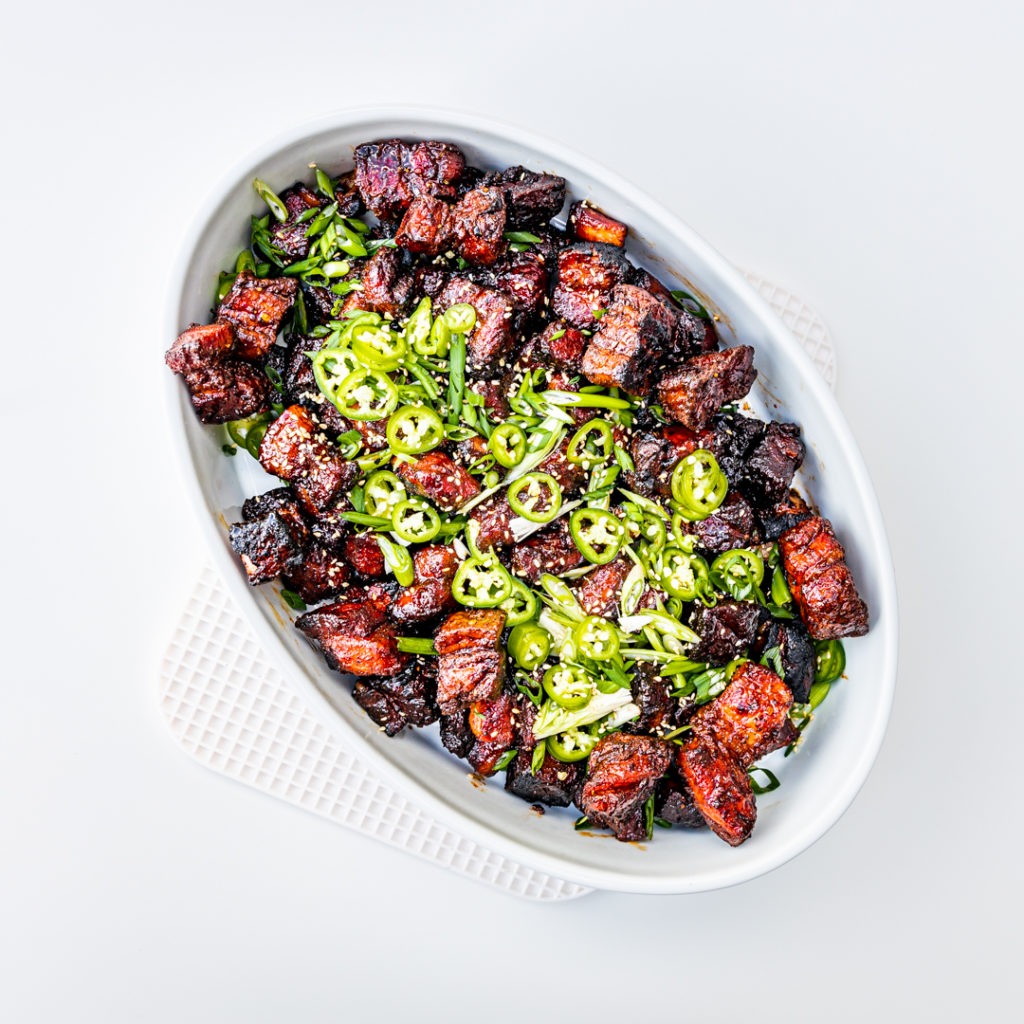
An Asian style rub is applied, then the pork is cooked low and slow for two hours before being braised at a higher temp in soy, ginger, hoisin, and more. Then they’re glazed in a sweeter, thicker version of the braising liquid and finished by caramelizing on the grill. You will want to make them again.
Asian sticky pork belly burnt ends recipe
Based on the flavors from Hey Grill Hey’s Asian Sticky Ribs and the method from How to BBQ Right
Ingredients
- 6–8 lb skinless, uncured pork belly (6 lb barely fits on a standard Kamado-style cooker, just so you know)
For the rub:
- 4 Tbsp smoked paprika
- 1 Tbsp Chinese 5 spice powder
- 1 Tbsp ground ginger
- 1 tsp ground mustard
- 2 tsp Kosher salt
- 1 1/2 tsp ground pepper
- 1 1/2 tsp ground allspice
- 1/2 tsp crushed red pepper flakes
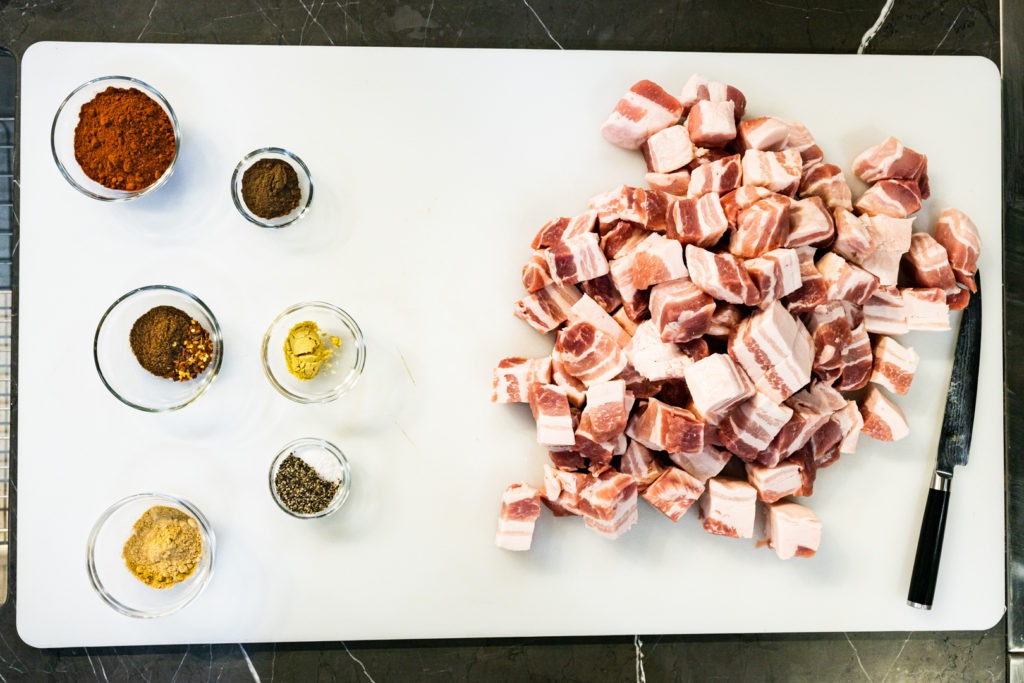
For the braising liquid:
- 1 C hoisin sauce
- 1/2 C soy sauce
- 1/2 C brown sugar
- 1/4 C rice wine vinegar
- 3/4 C white grape juice or apple juice
- 4 cloves garlic crushed
- 3-inch fresh ginger root, peeled and sliced
- 6 scallion whites, diced
- 1 tsp cayenne powder
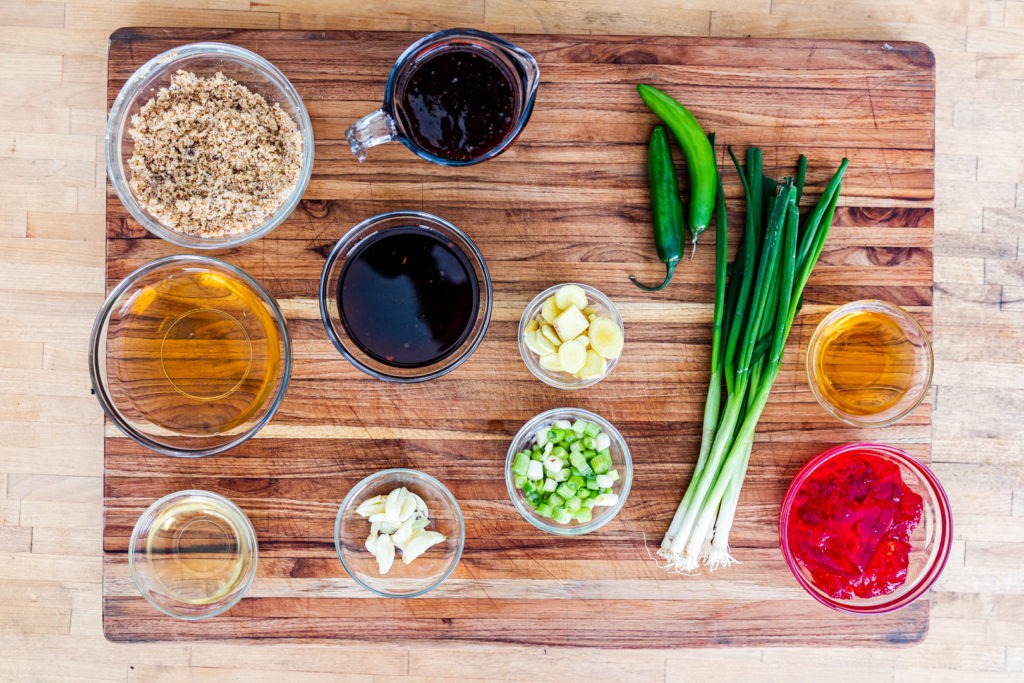
For the sticky glaze:
- 10 oz red pepper jelly
- 1/2 C apple cider vinegar
Fresh sliced serrano chilies, sliced scallions, and sesame seeds to garnish
Instructions
Rub and start the meat
- Heat your smoker to 250°F (121°C) with your choice of wood. We used hickory this time. Use the air probe from the Smoke to make sure your temps stay on track, with the high alarm set to 275°F (135°C) and the low alarm set to 225°F (107°C).
- Cut the pork into cubes about 1–1.5″ on a side (they will be taller than perfect cubes).
- Combine the rub ingredients and toss the pork with the rub.
- Arrange the cubes on the smoker grate. If your grate has spaces that are too wide, use a cooling rack set in the smoker. Don’t crowd the cubes too closely together.
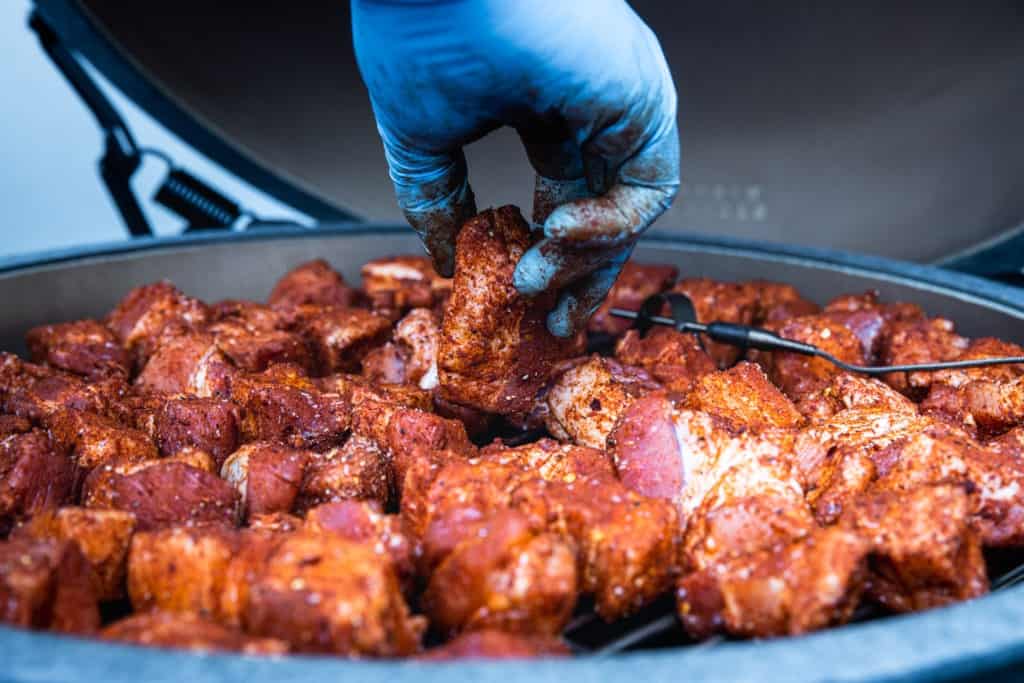
- Smoke, monitoring the air temperature, for 2 hours.
Braise the pork
- Combine the ingredients for the braising liquid together, whisking to combine and to dissolve the sugar.
- Remove the pork cubes to a disposable aluminum pan and pour the braising liquid over it.
- Insert a needle probe into one of the larger cubes of meat and cover the pan tightly with aluminum foil. Set the high alarm for 203°F (95°C), our target doneness temperature.
- Place the pan of pork in the smoker. Increase the smoker temperature to 325°F (163°C), with your Smoke high-temp alarm at 350°F (177°C) and low-temp alarm at 300°F (149°C).
- Braise the pork until the meat alarm sounds, about an hour.
Glaze the pork belly burnt ends
- Remove the pork to a separate large bowl.
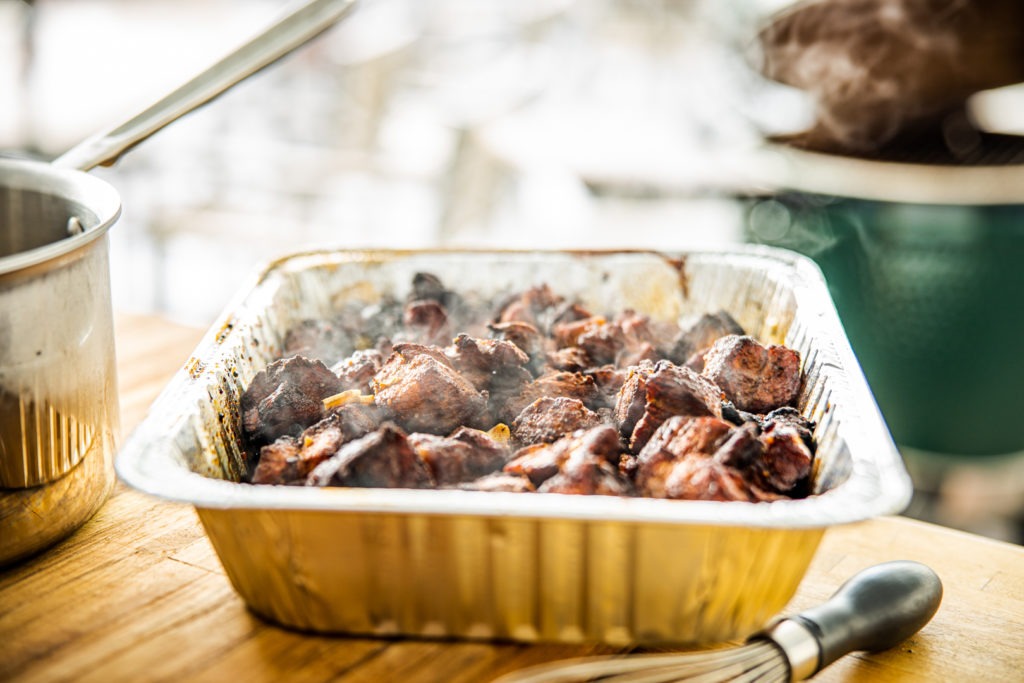
- If your smoker doubles as a grill, allow it to come to high heat. If you have a separate grill, heat it to high.
- Pour the braising liquid into a pot. Add the apple cider vinegar and the pepper jelly.
- Bring the liquid to a brisk boil and reduce by about a third, until the liquid becomes syrupy.
- Pour the syrup over the burnt ends, stirring or tossing to combine.
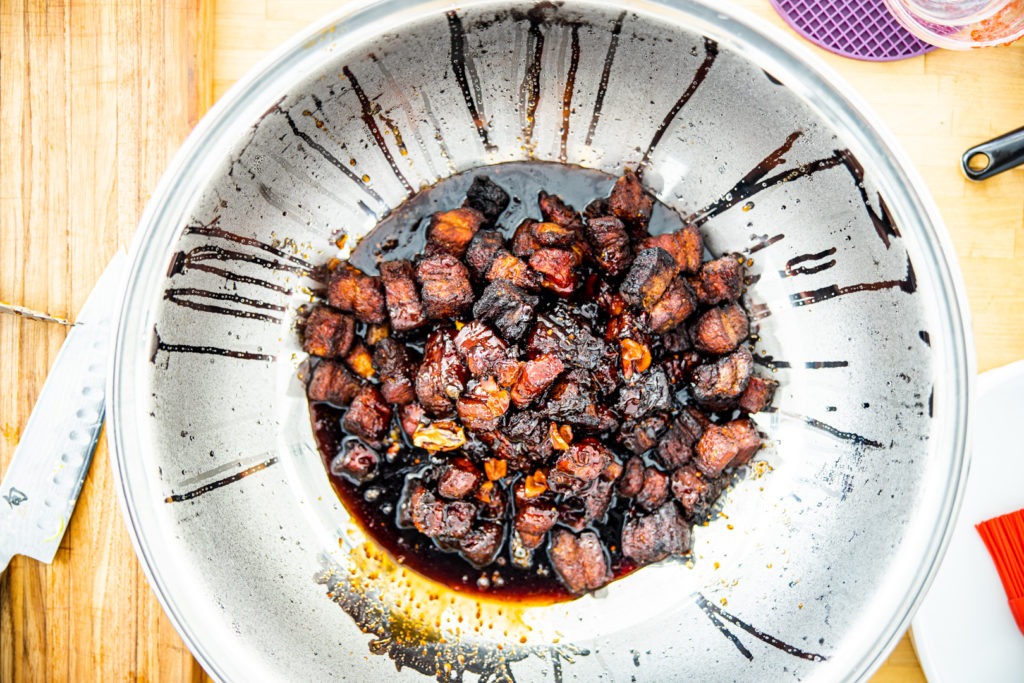
- Place the pork cubes on the hot grill and allow them to caramelize, turning them and brushing on more glaze if desired. (Work in batches, if necessary so as to not burn them more than, well, burnt ends ought to be.)
- Strew the burnt ends with sesame seeds, sliced serrano chilies, and scallions.
- Serve and watch everyone lose their minds.
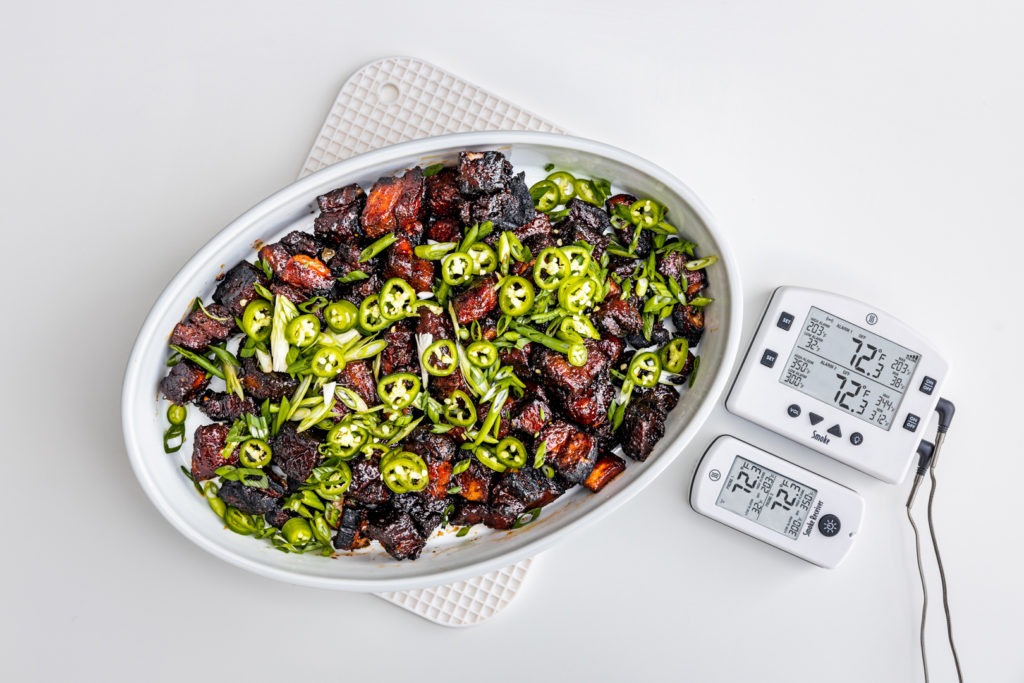
When we served this to our fellow ThermoWorkers, the response was immediate and ecstatic. And for a company that cooks a lot of BBQ, that’s really saying something! These savory, sweet, deeply flavored little flavor bombs will please even the most discerning BBQ palate. And with the precision and accuracy of your ThermoWorks alarm thermometer, you’ll get it right every time. Happy BBQ!
Shop now for products used in this post:
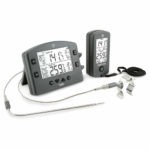 |
|
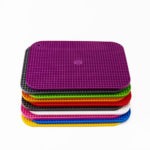 |  |


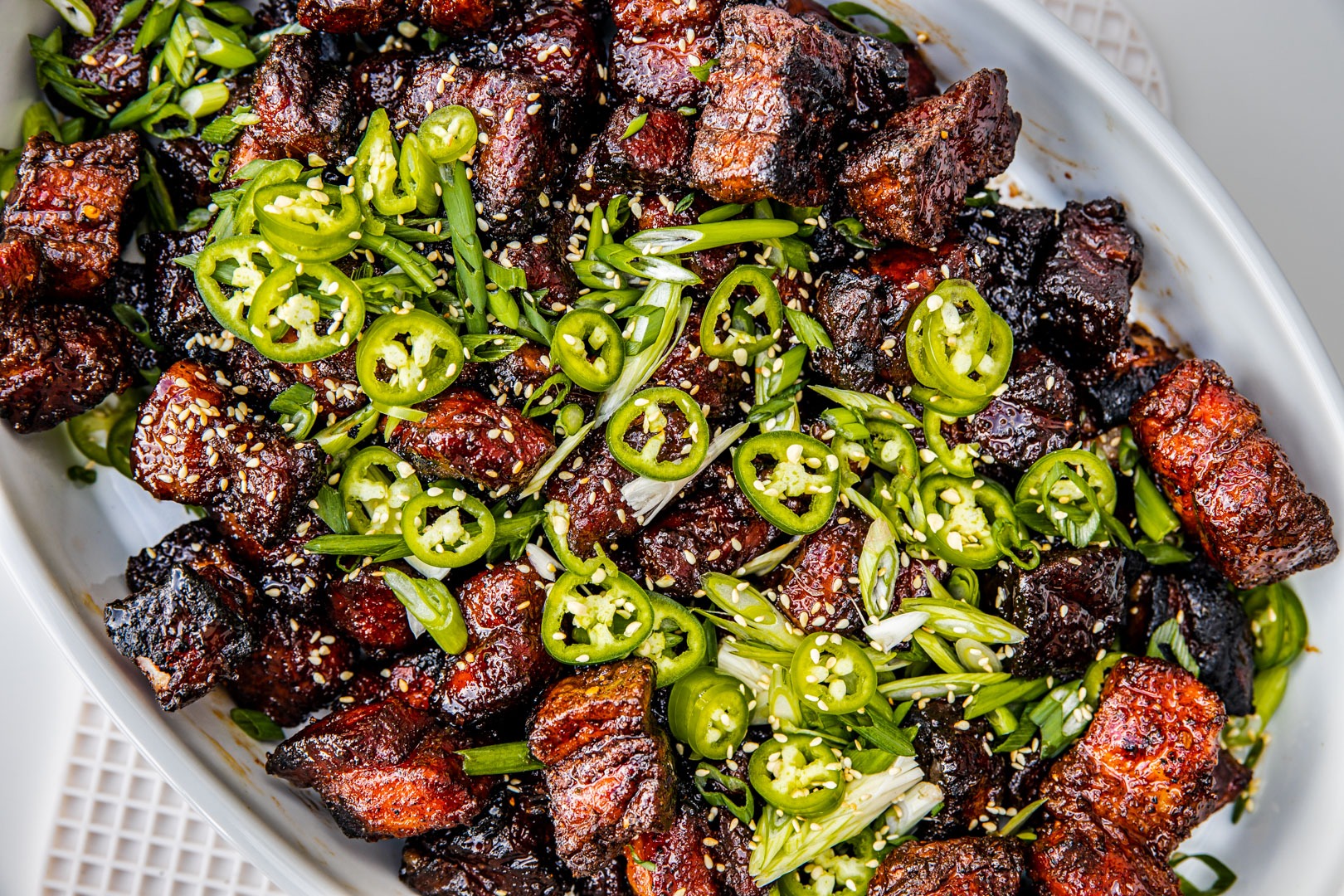
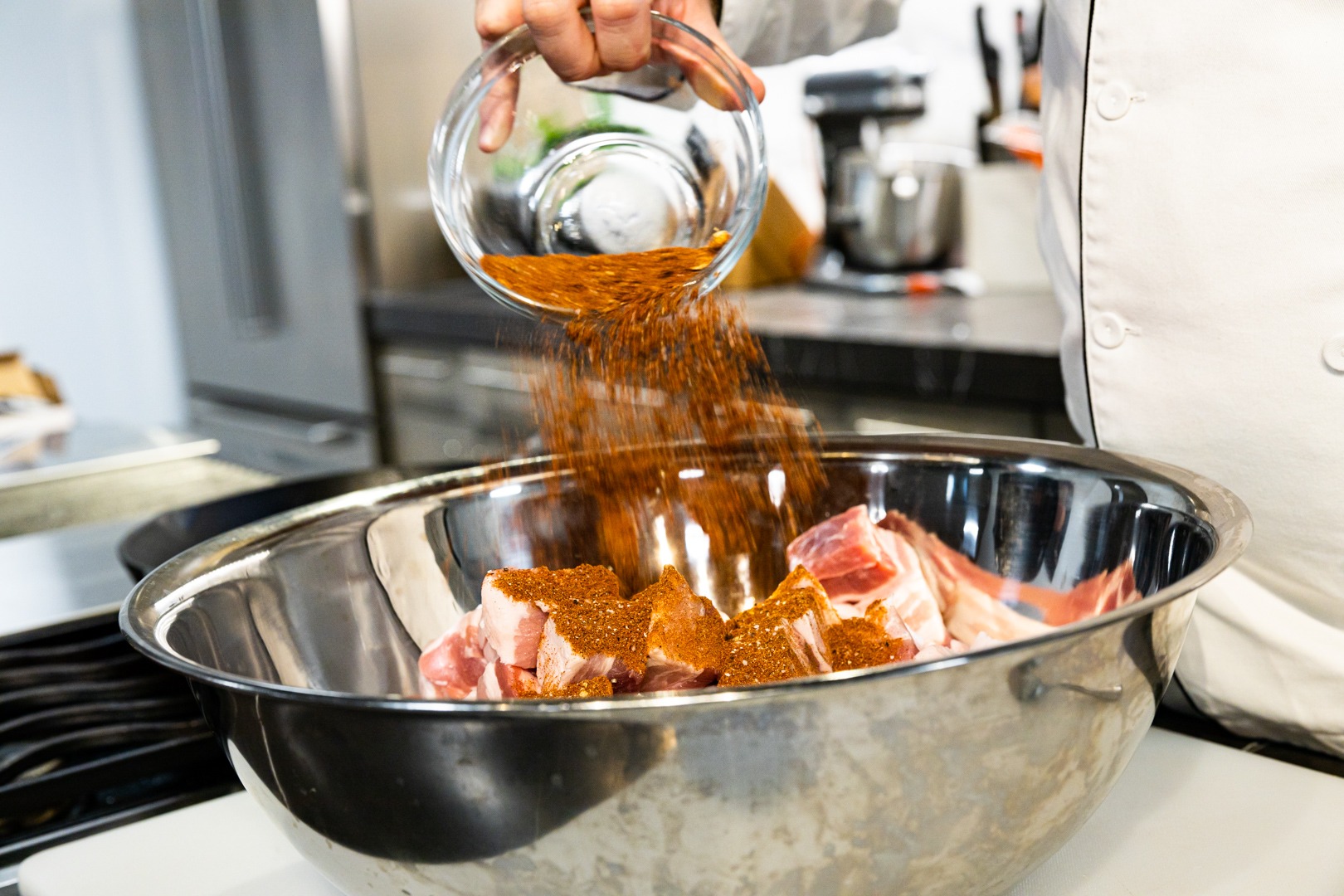
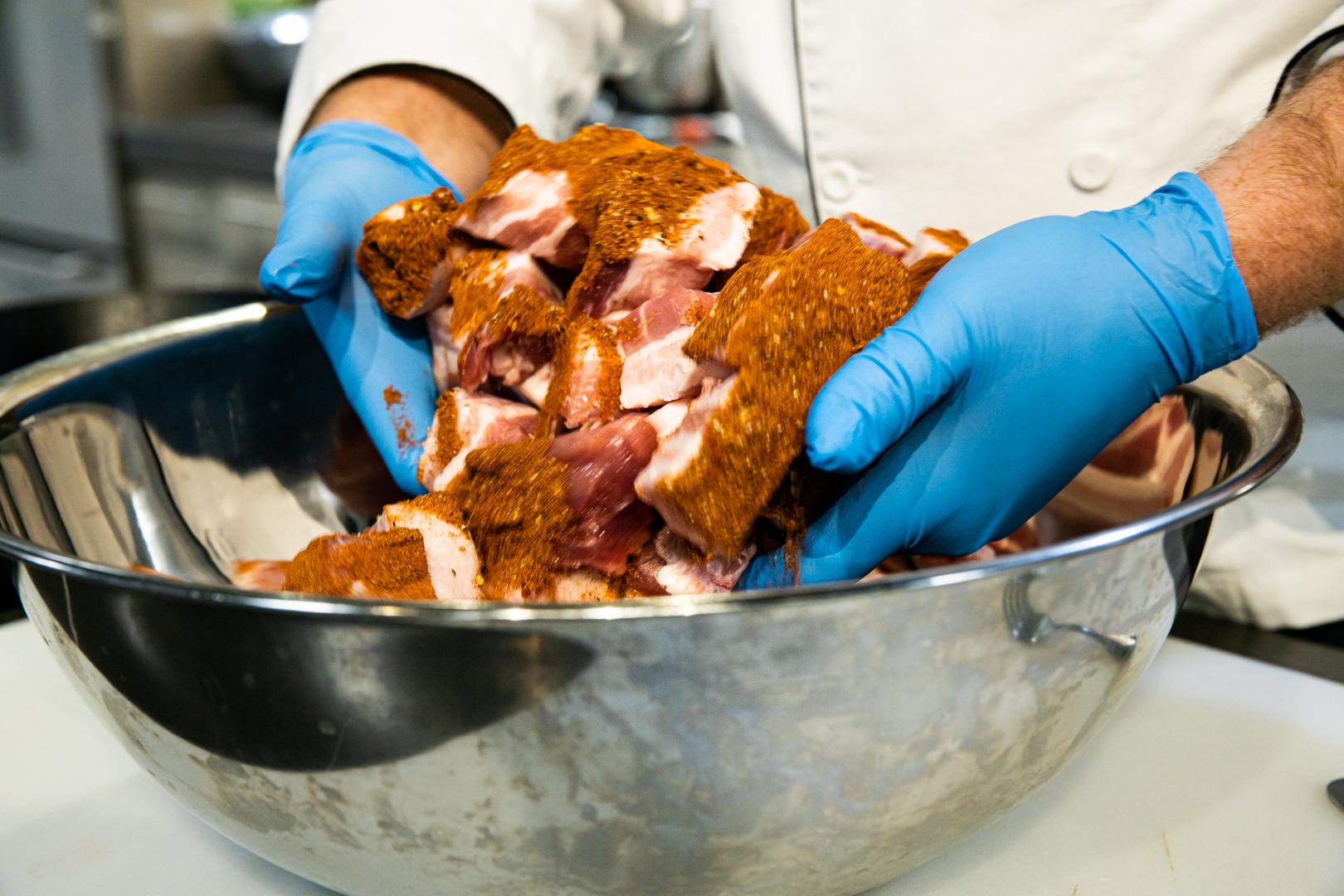
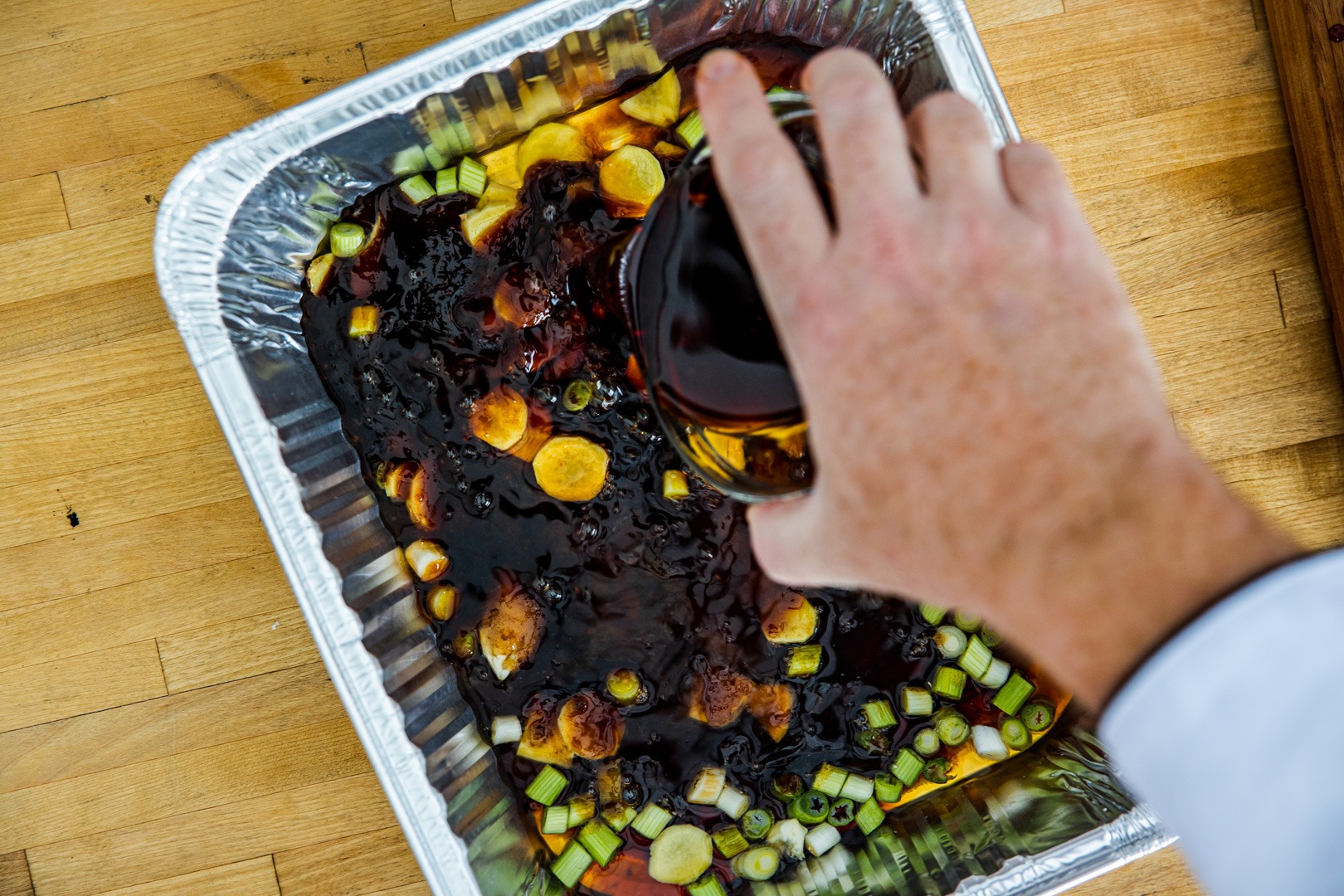
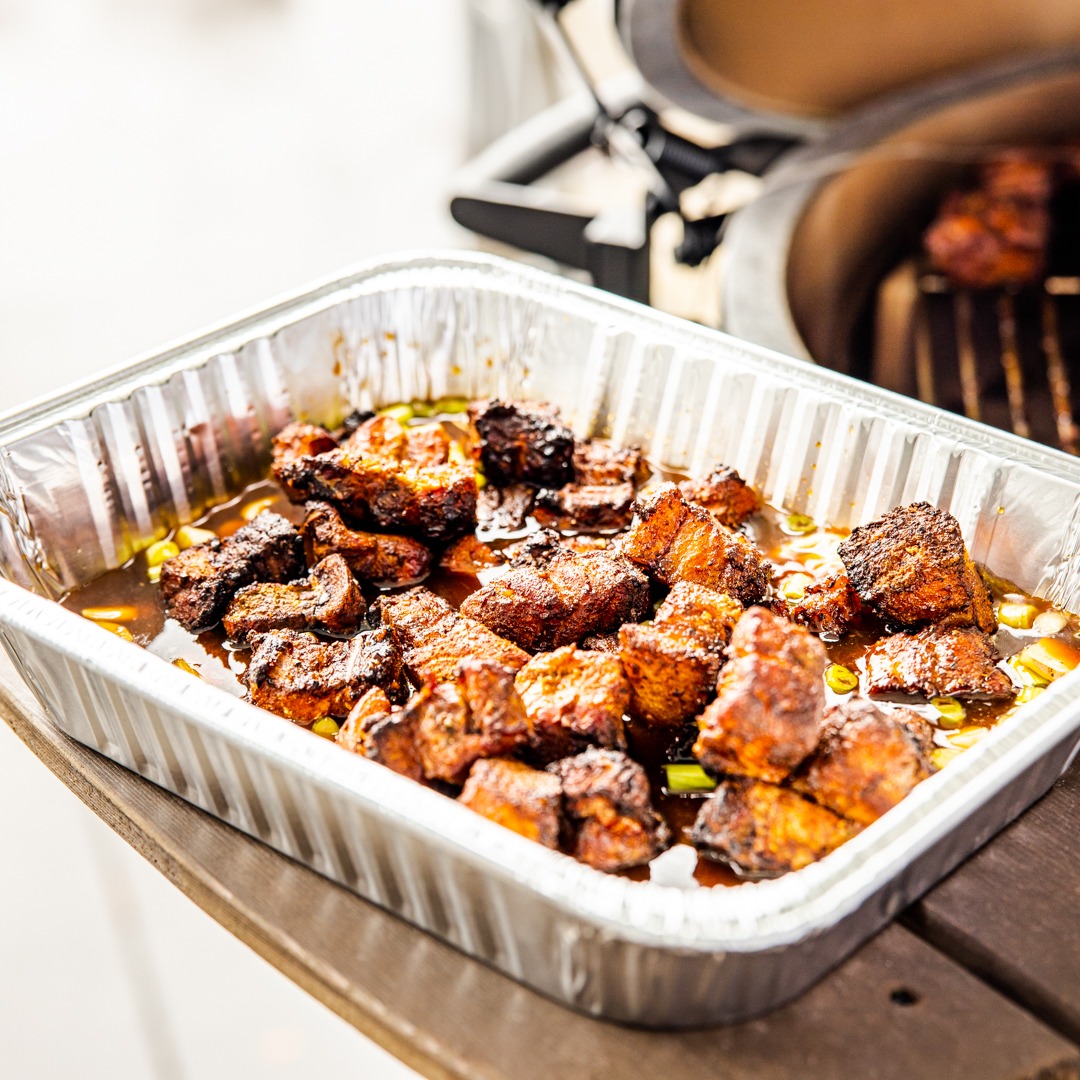
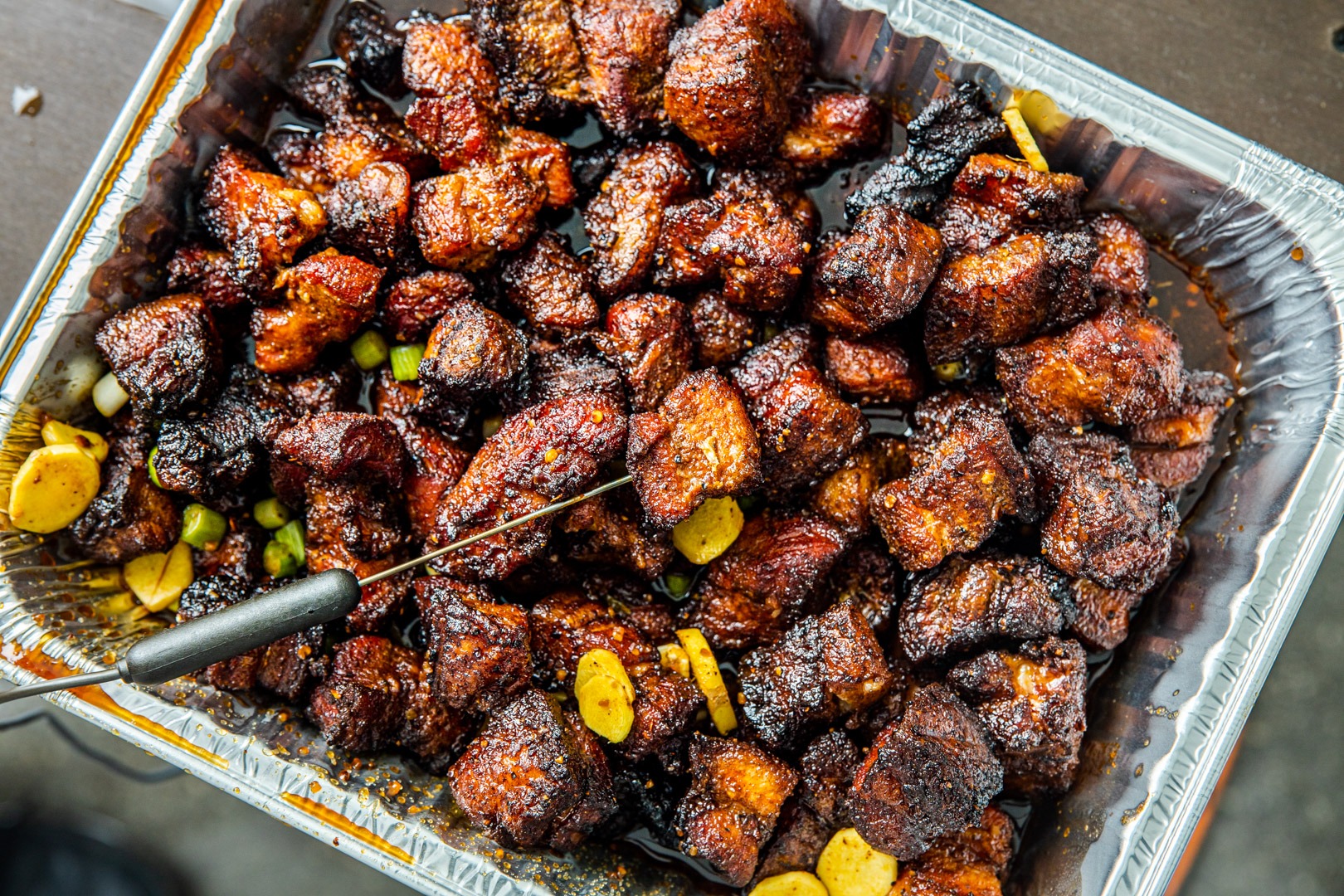
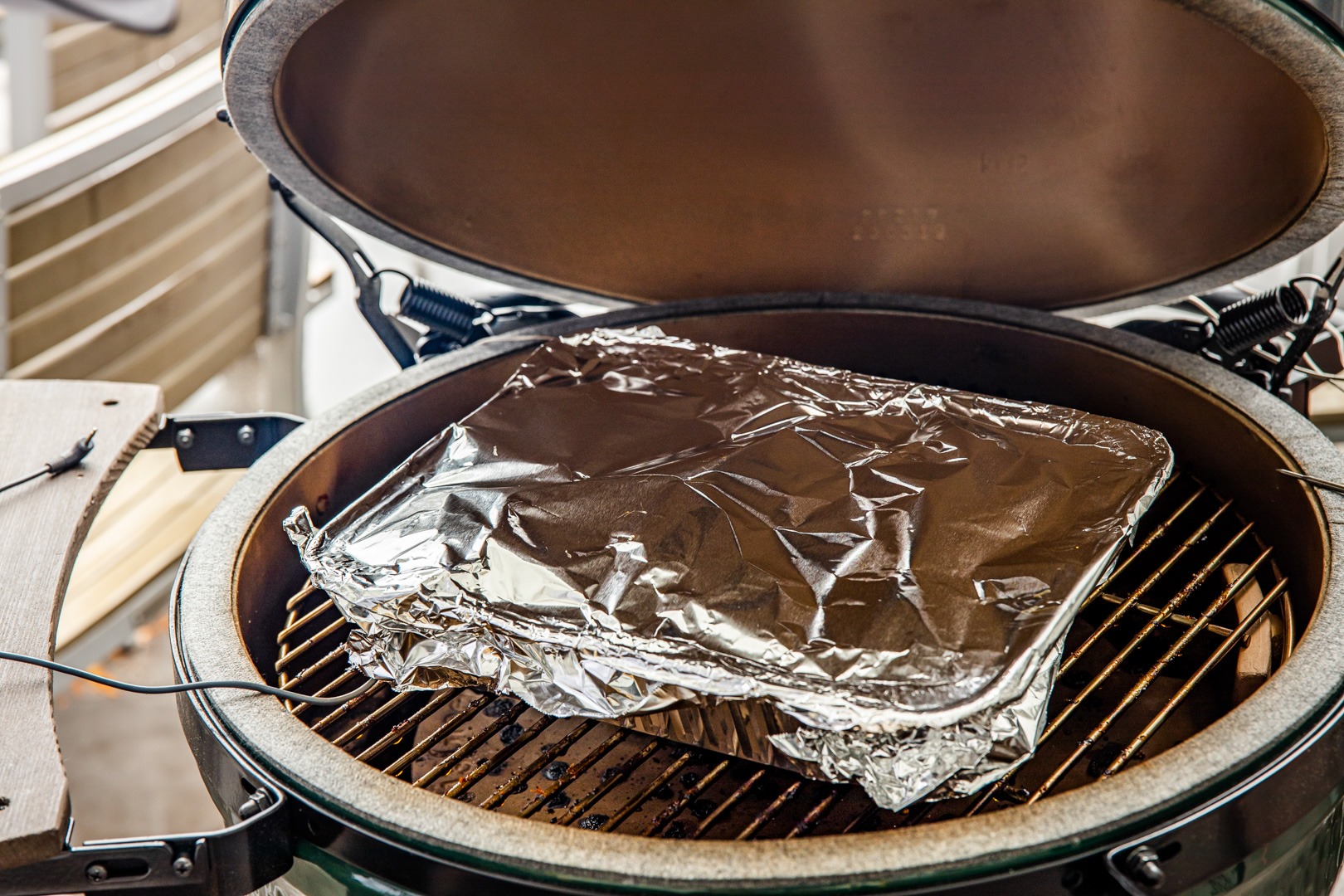
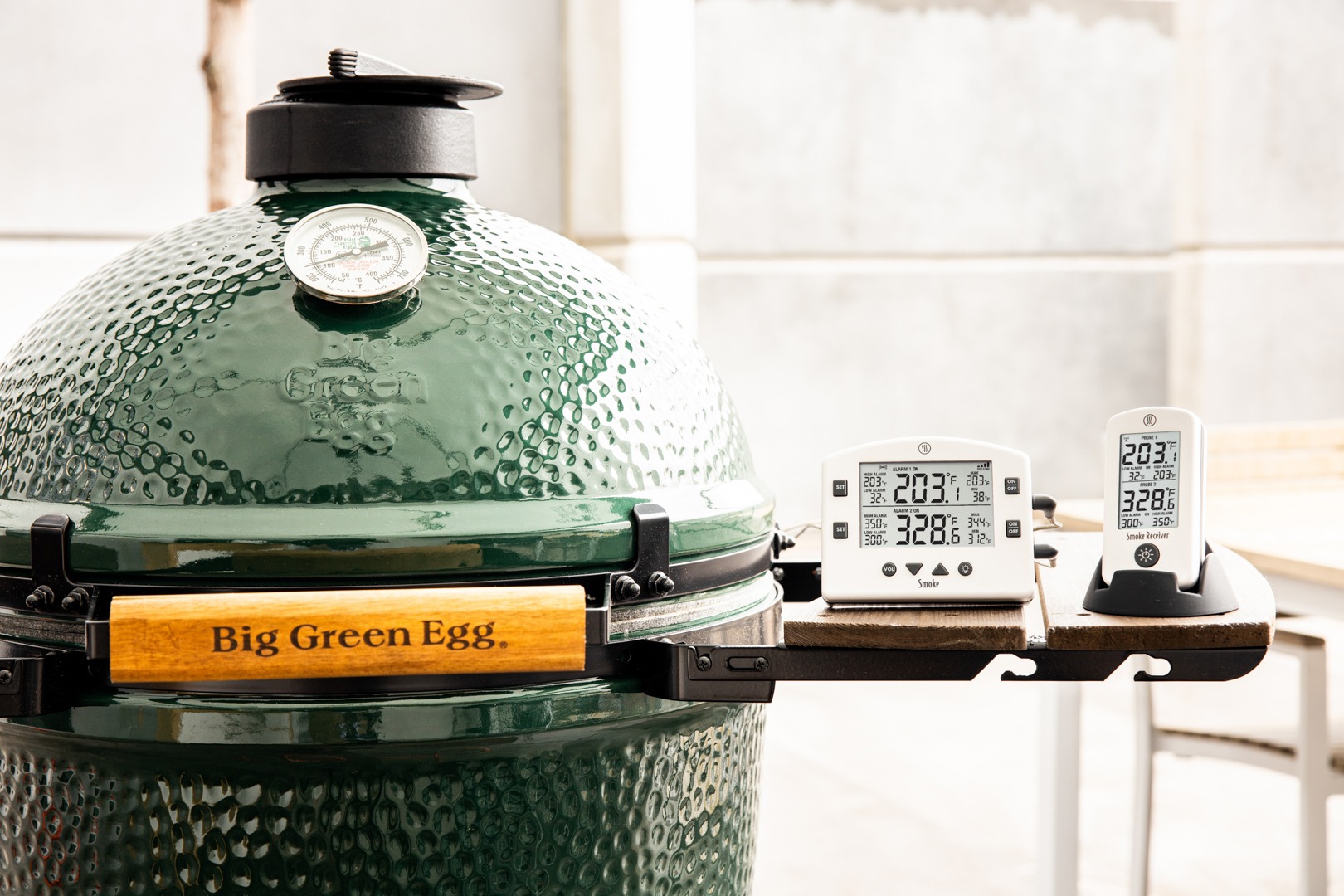
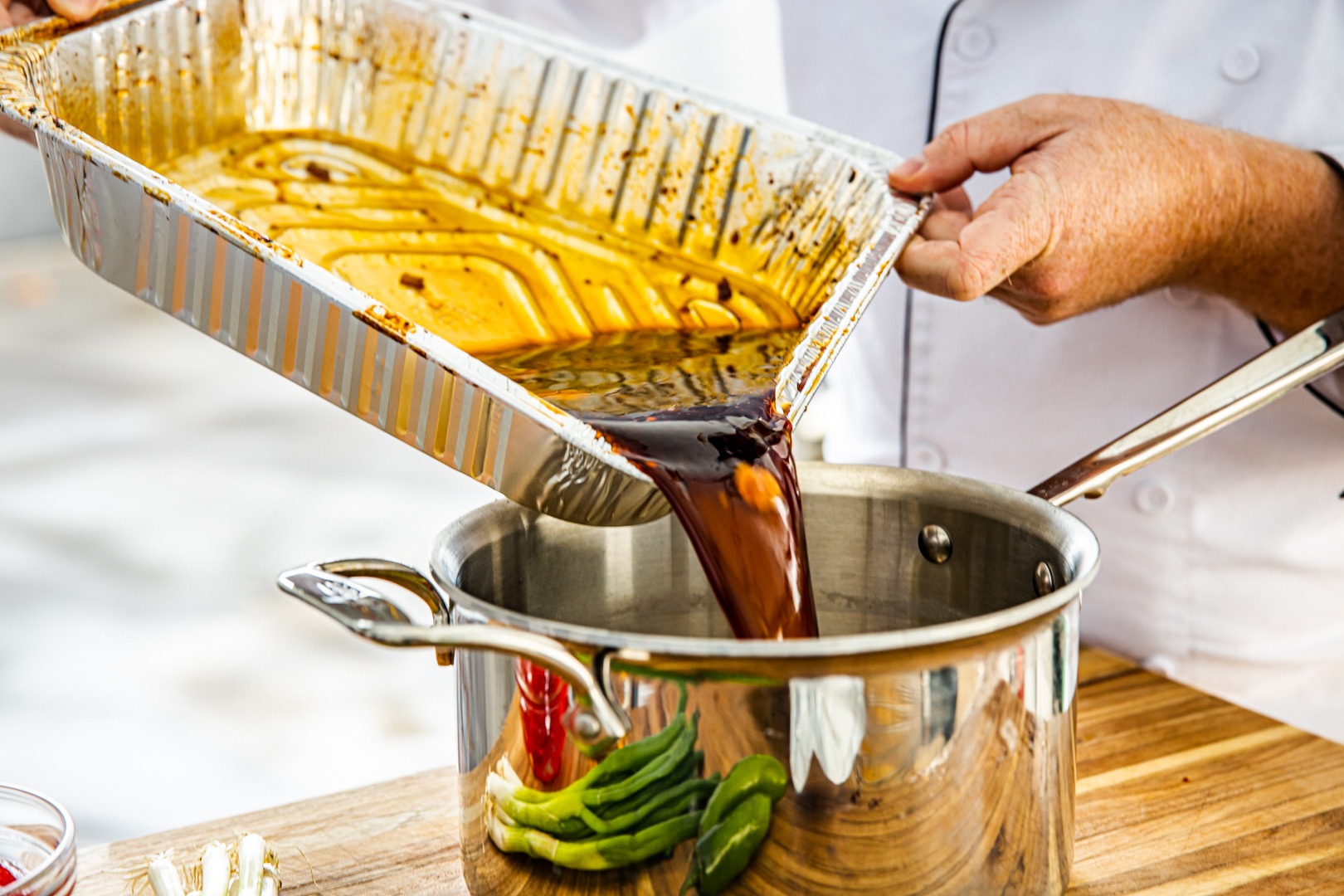
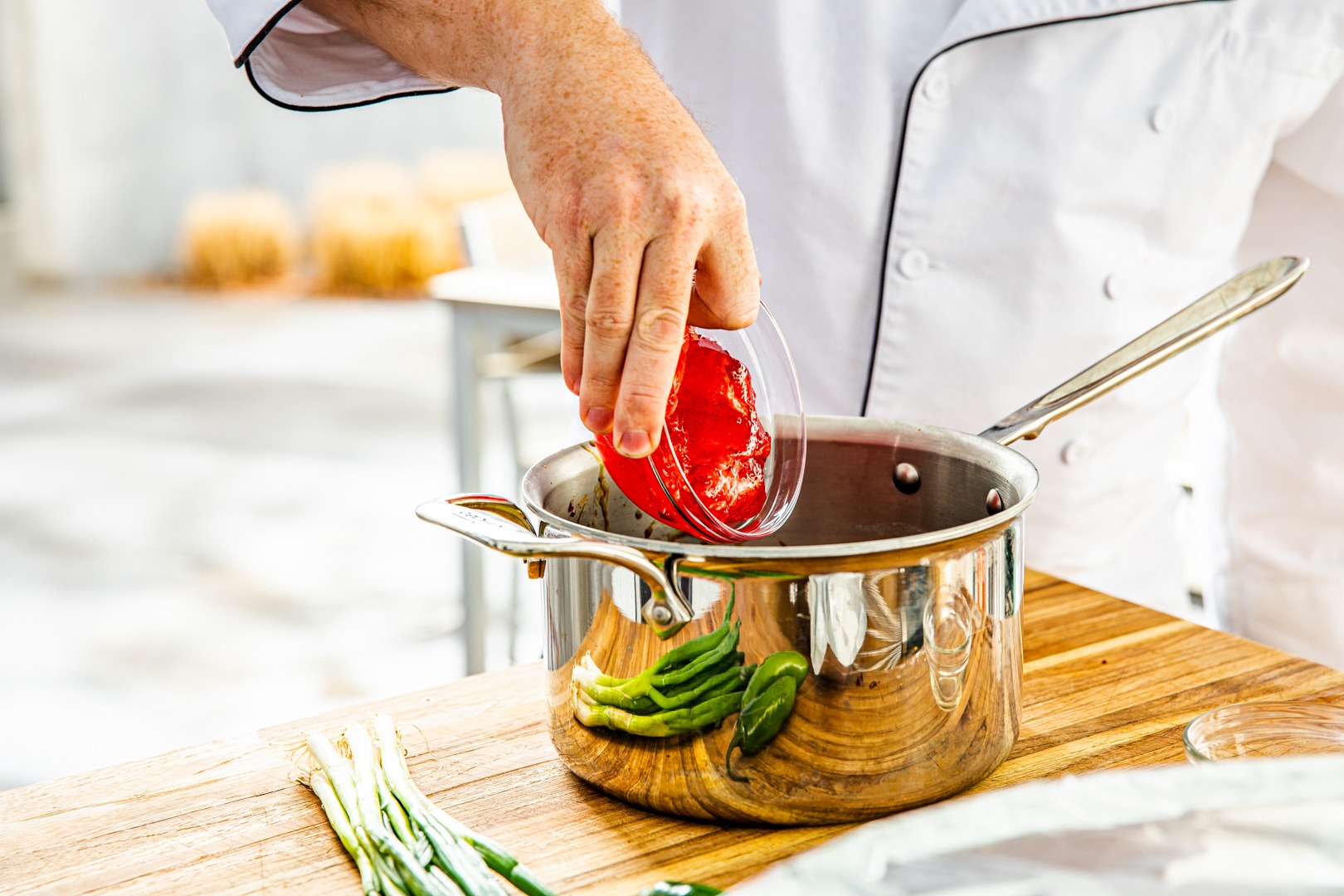
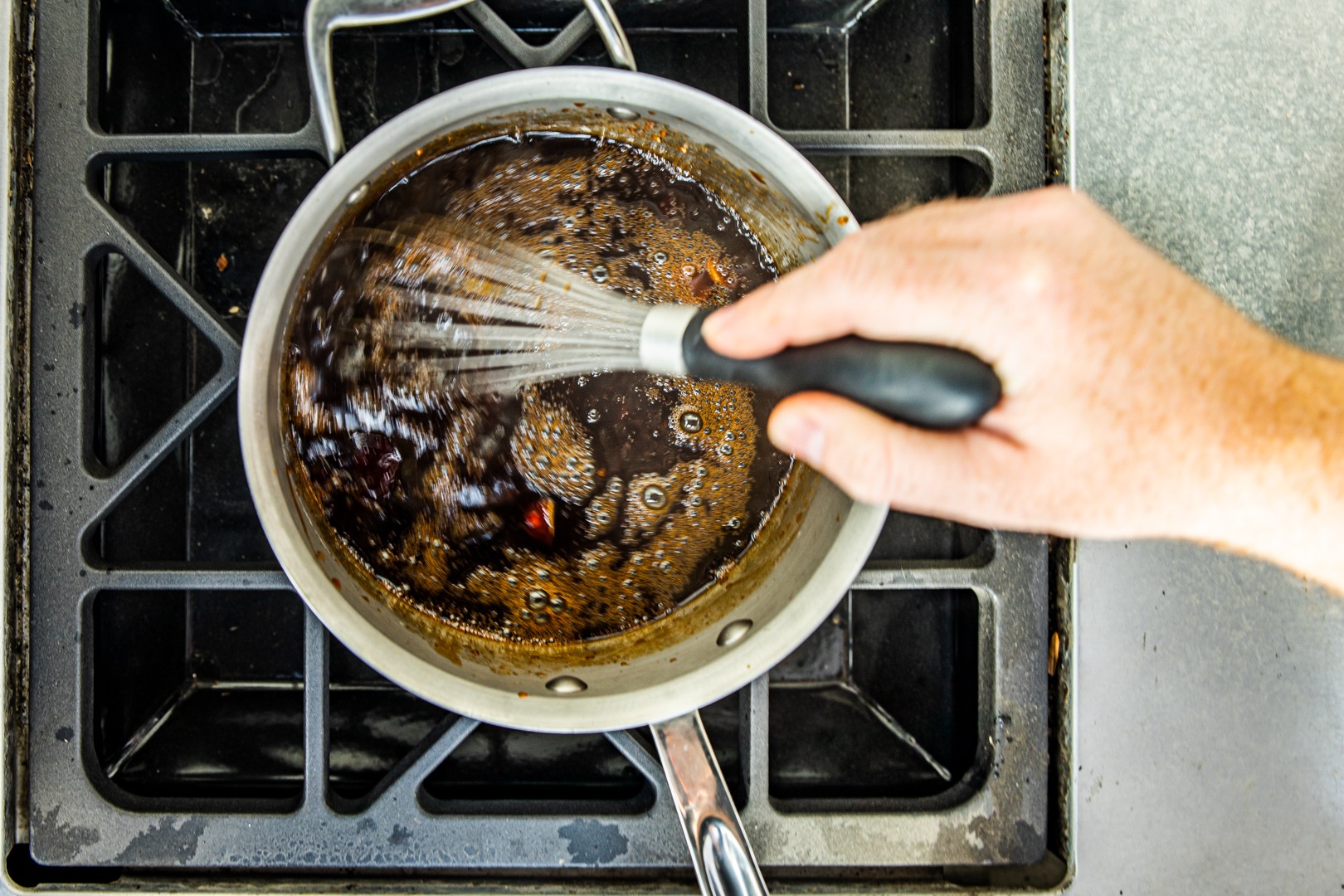
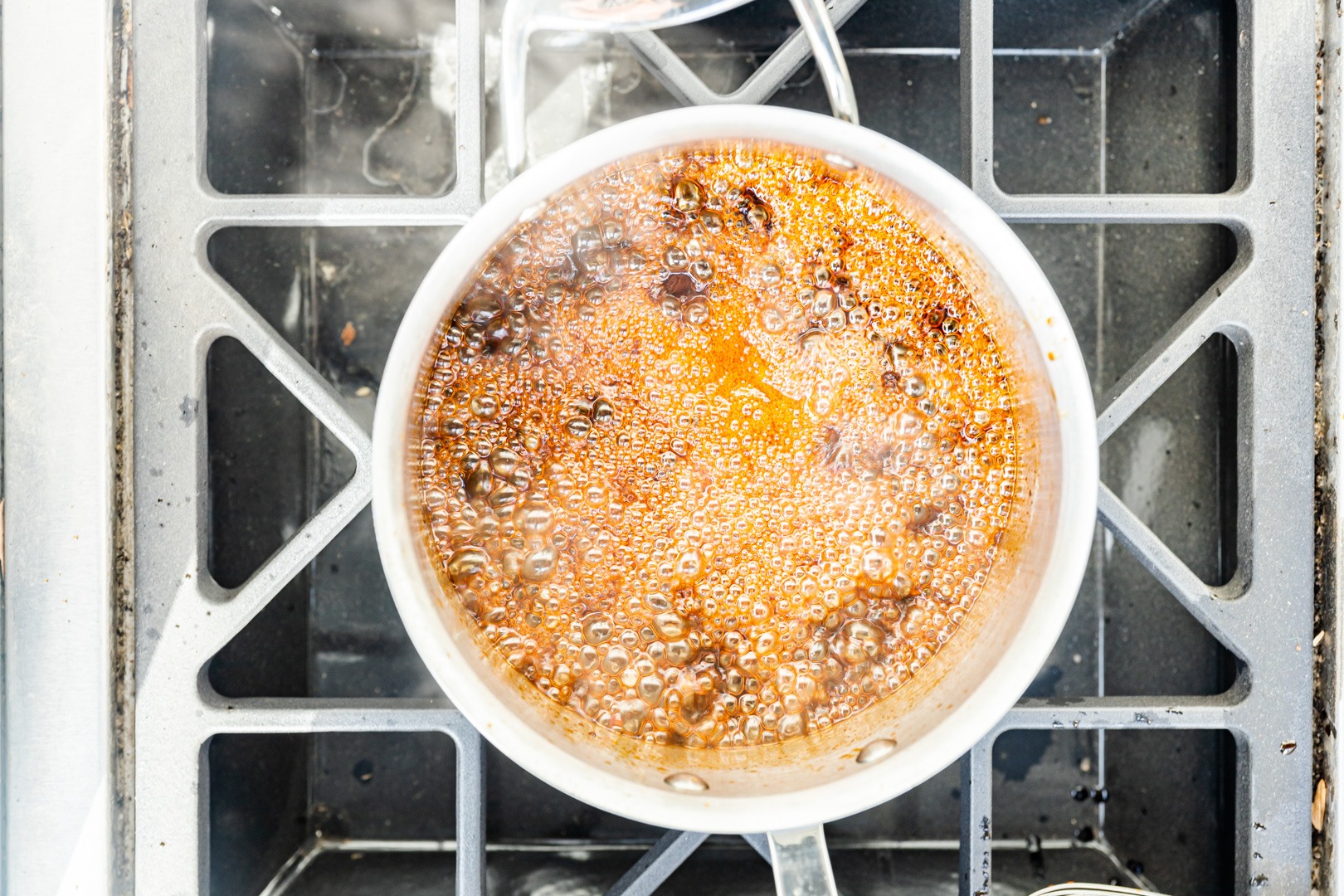
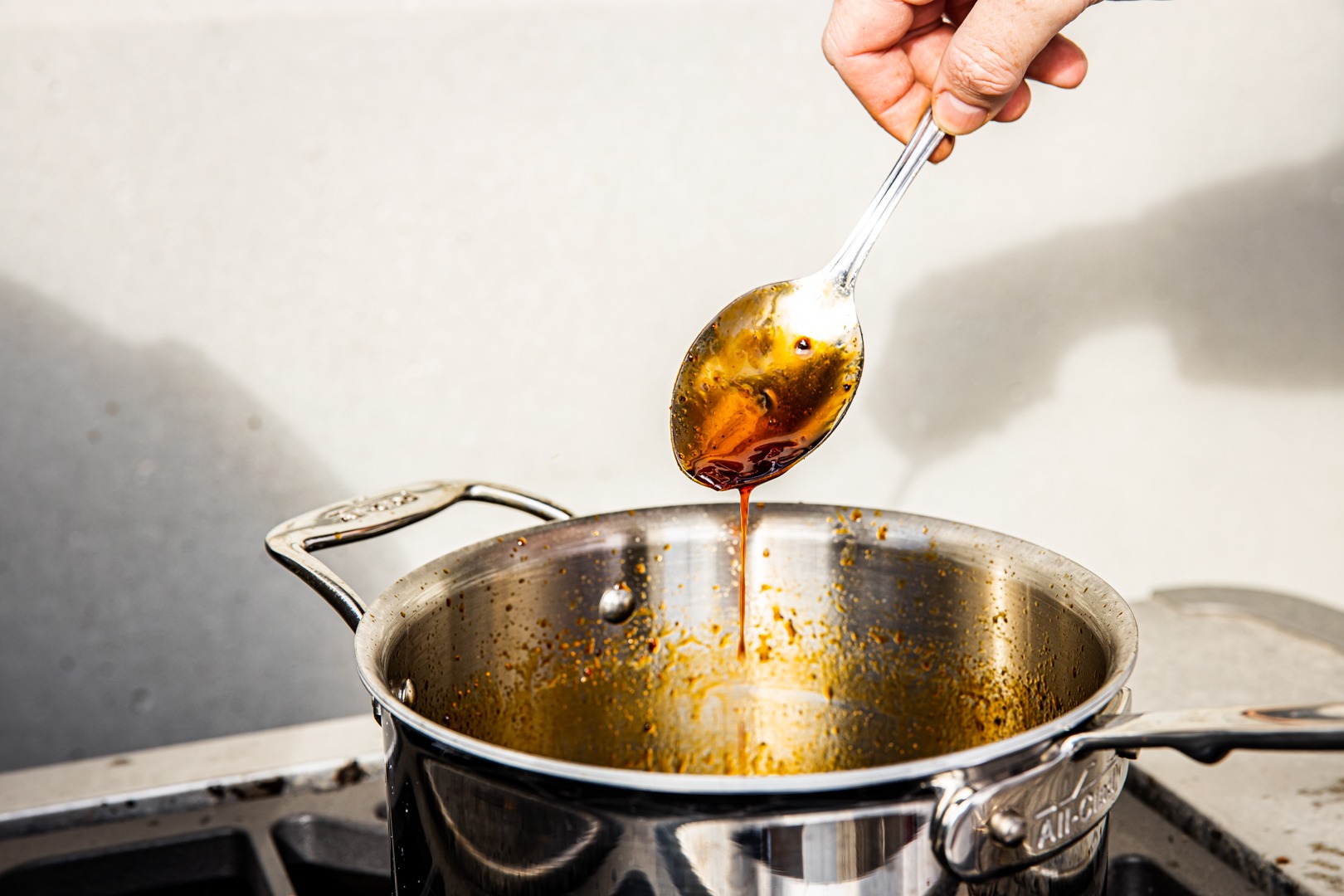
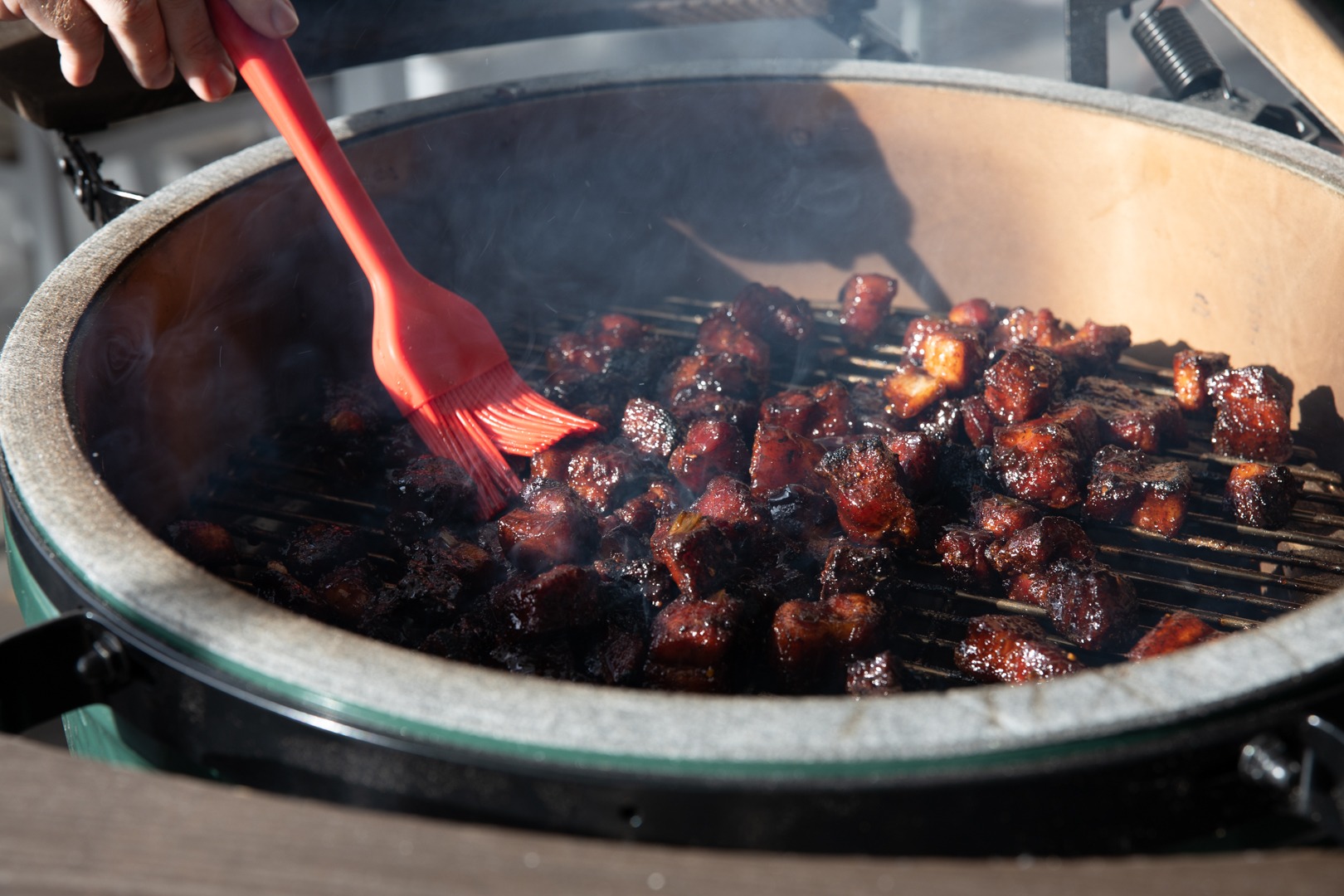
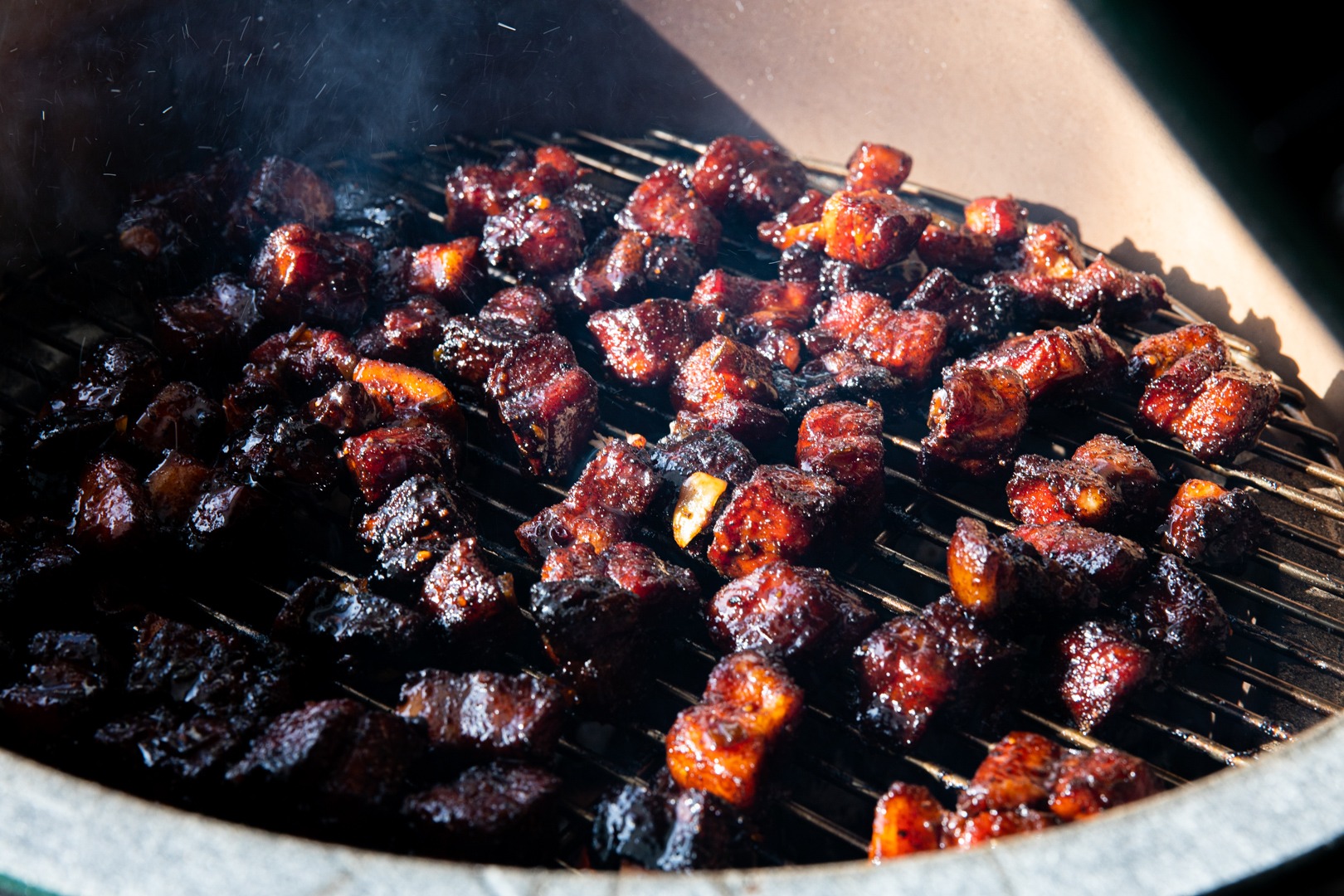
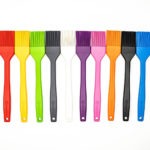
You guys have amazing recipes, have you ever thought about publishing a book?
JBP
We have thought about it, but are certainly not ready to do it yet, if ever we do. Thank you!
That looks delicious. Curious if this flavor profile can be used on beef? Had some surgery and the rich, fatty pork belly does not agree with my belly.
Terry,
I think it will work on beef, just not quite as well. Give it a shot, for sure!
Mmmm…. looks awesome…. Been trying to find something to do with my Pork Belly.
You may want to add a little item to the recipe (your page) like, what wood to use in the smoker. Went to Rib link to find it.
Cherry or Apple was recommended
For Pork I typically use use an even mix of Cherry, Apple, Pecan wood/pellets
Is there a printer friendly option for this recipe??
At the bottom of the post, under the items used, there is a Print Friendly button. Click it and a screen will appear. I suggest changing the images to 0% rather than 100%, which will result in some strange numbers in the post, but will take up less space. We’re trying to think of a better solution to this problem.
Sounds like a wonderful recipe, but Lord have mercy…19 printed pages?! There must be some way of condensing this.
We’re trying to find a good solution for this problem. In the mean time, I understand there is an option on the Print Friendly version that allows you to put images at 0% instead of 100%, then you don’t get the images. Not a perfect solution.
you were offering a discount around the holidays for the thermapen 4 when will that offer be again?
Kim,
The best way to keep track of those deals is to subscribe to your email list. I don’t know when the next one will be.
So, I THINK this is an absolutely delicious recipe but I cannot be absolutely sure because the flare is real during the grilling phase. The fat dripping onto the grill while set to high resulted in the most flame I have ever encountered on my grill, and pork belly pieces that became something just short of charcoal. Perhaps I needed to go longer on the smoker but they were above 203 when I removed them.
Anyway, just a word of warning for anyone else trying this. Still tried eating some of it and will definitely try again because there was excellent flavor in there somewhere!
Gregory,
Maybe have your grill at a lower temp and let them take a little longer to caramelize. I hope it works better next time!
I use my oven broiler to finish my ribs and burnt ends. Easier to manage and takes less time to get a great finish on the meat with the caramelization. If you want to make your life easier use your oven after you put the meat into the sheet pan with the braising sauce. Much less work than keeping your BBQ hot and the heating is more consistent. I tend to do this everything I smoke these days. You get the smokey flavor with the first two hours in the smoker.
How about, for those of us not lucky enough to own a smoker…. any way we can come close using our oven??
Oh absolutely! Cook them on a cooling rack set in a sheet tray at 250°F as recommended, then cover and braise at the higher temp. To glaze/caramelize them, cook them under a broiler, but not too close to it! But if you skip the glazing step and just toss them with the syrupy sauce, they’ll still be great!
Read this on Thursday and planned for an exciting Sunday. Served with rice and extra glaze. We were not disappointed!
Curious as to why the method change from caramelizing the glaze on the cubes in the pan in the original method vs going direct heat and basting glaze in this method? Is there a difference in outcome?
Looks AMAZING.. cant wait to try it.
In the original, the caramelization wasn’t quite as lacquer-like as we wanted for this recipe. The sheen and slightly bitter burr from the grilling is amazing. I hope you like it!